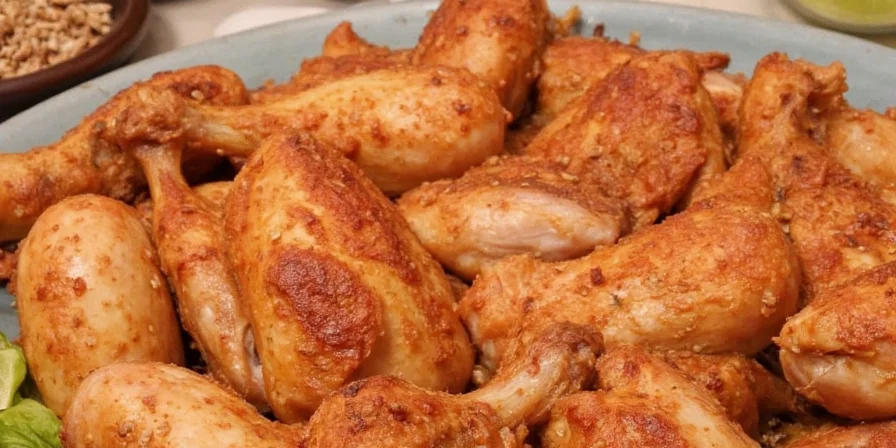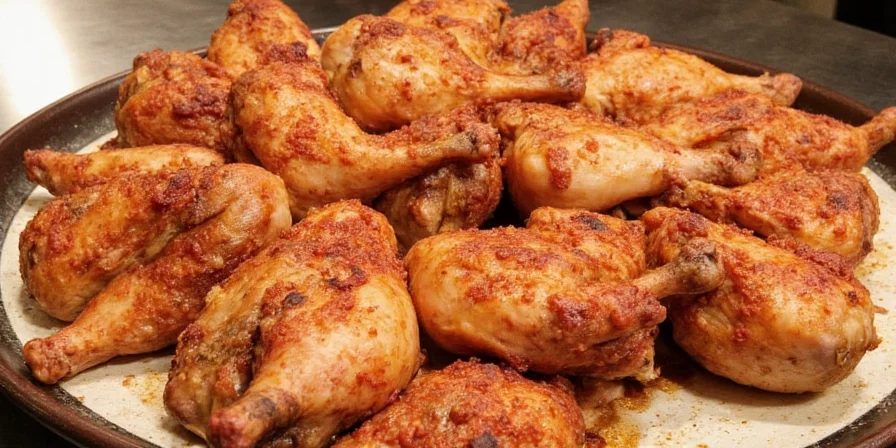The Ultimate Chicken Brine Guide: Juicy Results Every Time
If you've ever served dry, tough chicken, a simple salt brine is your solution. This guide reveals the exact brine method that guarantees tender, flavorful chicken—whether you're cooking for weeknight dinners or weekend barbecues. Forget complicated science; we'll focus on what actually works in real kitchens with practical steps you can follow immediately.
Learn the perfect brine ratio, exact timing for different cuts, and easy flavor variations that transform ordinary chicken into something special. No special equipment needed—just salt, water, and a container you already have.

What Is Chicken Brine and Why It Works
A chicken brine is simply salt dissolved in water that helps your poultry retain moisture during cooking. When chicken soaks in this solution, the salt helps the meat hold onto water, preventing that dry, stringy texture we've all experienced. The best part? You don't need fancy equipment or hard-to-find ingredients.
Brining works through a simple process: the saltwater solution penetrates the chicken, helping it retain up to 30% more moisture when cooked. This means even if you cook it a few minutes too long, your chicken stays tender and juicy.
Perfect Basic Brine Recipe (Works Every Time)
This foolproof ratio works for any chicken cut. No guesswork needed:
- 4 cups cold water (about 1 liter)
- 1/4 cup (60g) kosher salt (use 3 tablespoons if using table salt)
- 2 tablespoons sugar (optional, for better browning)
- Your favorite herbs or spices (see flavor variations below)

Step-by-Step Brining Instructions
- Mix ingredients: Dissolve salt and sugar in 2 cups warm water, then add 2 cups cold water
- Cool completely: Refrigerate brine until cold (about 1 hour) before adding chicken
- Submerge chicken: Place chicken in container and pour brine over it (use weights if needed)
- Refrigerate: Boneless pieces: 1-2 hours | Whole chicken or bone-in cuts: 4-12 hours
- Rinse and dry: Rinse chicken under cold water, then pat dry with paper towels
| Chicken Type | Brining Time | Tips |
|---|---|---|
| Chicken breasts (boneless) | 1-2 hours | Don't exceed 2 hours or texture becomes too soft |
| Thighs or drumsticks | 2-4 hours | Can handle longer brining than breasts |
| Whole chicken | 8-12 hours | Best results when brined overnight |
| Turkey | 12-24 hours | Requires longer due to size |
Common Brining Mistakes and Simple Fixes
- Too salty chicken: Using table salt instead of kosher salt (it's denser) or brining too long. Solution: Stick to recommended times and measure salt by weight when possible
- No noticeable difference: Not using enough salt or brining too briefly. Solution: Use the exact 1/4 cup salt per quart ratio
- Soggy skin: Not drying properly before cooking. Solution: Pat dry thoroughly and let sit uncovered in fridge for 1 hour before cooking
- Inconsistent results: Using warm brine. Solution: Always cool brine completely before adding chicken

Easy Flavor Variations Everyone Loves
Add these ingredients to your basic brine for restaurant-quality results:
Lemon Herb Brine
- 2 sliced lemons
- 4 smashed garlic cloves
- 2 tablespoons fresh thyme or rosemary
Spicy Southern Brine
- 2 tablespoons hot sauce
- 1 tablespoon black pepper
- 1 teaspoon cayenne (optional for extra heat)
Sweet Maple Brine
- 1/4 cup pure maple syrup
- 1 tablespoon ground cinnamon
- 1 teaspoon ground ginger

Frequently Asked Questions
Does brining really make a difference?
Absolutely. Brined chicken stays juicy even if cooked slightly beyond 165°F. Unbrined chicken quickly becomes dry when overcooked by just a few minutes.
Can I brine frozen chicken?
No—always thaw chicken completely first. Brine won't penetrate frozen meat properly, resulting in uneven seasoning and moisture retention.
Do I need to rinse after brining?
Yes, a quick rinse removes excess salt from the surface. Pat dry thoroughly before cooking for best browning.
What's the maximum brining time?
Boneless breasts: 2 hours | Bone-in pieces: 12 hours | Whole chicken: 24 hours. Beyond these times, texture becomes unpleasantly soft.
Can I use sea salt instead of kosher salt?
Yes, but use 25% less since sea salt is denser. Better to measure by weight (60g per quart of water) for consistent results.
Ready to Never Serve Dry Chicken Again?
The secret to consistently juicy chicken is simpler than you thought. By following this straightforward brine method, you'll transform your chicken dishes from hit-or-miss to guaranteed success. Start with the basic recipe, try one flavor variation this week, and notice the difference in your next meal. No special skills required—just salt, water, and a container you already own.












 浙公网安备
33010002000092号
浙公网安备
33010002000092号 浙B2-20120091-4
浙B2-20120091-4